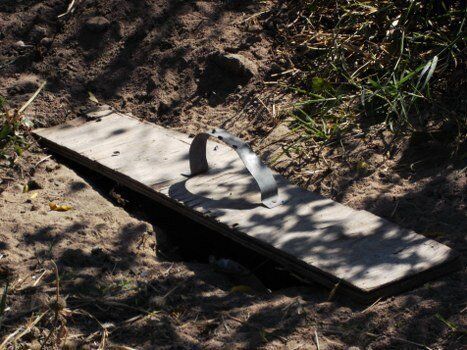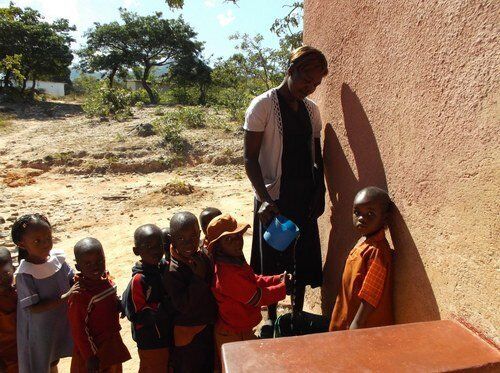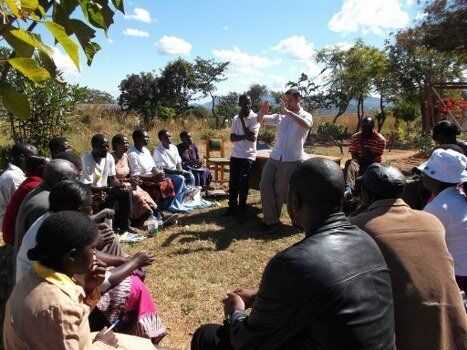The photos featured in this blog are by community members in Zimbabwe who are acting as photo-monitors as part of a PhotoVoice programme to make international development work more reactive and accountable to local communities.

© Emilia Mdaruvinga / CAFOD / CARITAS / PhotoVoice
During a trip to Indonesia in 2012 I asked the staff of our local partner organisation about their experiences of the international effort in the aftermath of the 2004 tsunami. Their work in the region was prompted by the human need created by this event, however they were one of the few international NGOs to stay active in communities in Indonesia after the initial disaster relief effort. As they operate in partnership with communities, aiming to build up local capacity and resilience to disaster and health risks, their work took them to some of the most remote and disconnected communities in the islands. They had a bewildering portfolio of horror stories concerning what they found, but among the most worrying of these were not accounts of damage left by the tsunami, but of relics of interventions by other NGOs that had been and gone before them. Gleaming silver water towers standing like alien artefacts in communities with no infrastructure and a dire shortage of drinking water, not connected to anything. Concrete blocks of classrooms beginning to be reclaimed by the tropical foliage, unheeded by the inhabitants of nearby villages with no school teachers, school books or curriculum.
The most telling of these eyebrow-raising tales was of a community facing health problems caused by poor hygiene and water-borne diseases. On the outskirts of this community stood not one, but two concrete blocks of drop latrines, equipped with fly traps, locking doors, all mod cons. Locals continued to use the undergrowth for their toilet trips, and the latrines - the most solidly built structures in the community - were being used to store grain. It turned out that these two blocks had not been built by the same NGO. The first (I won't name and shame here) identified the community as a target for aid, conducted some research, and concluded that water-borne diseases were the priority issue for the community. The solution? Build drop latrines, so people don't have to use the bush. Simple! So a few weeks of volunteer labour later, there is a spanking new toilet block. The village elders are invited for an inauguration ceremony, photos are taken, and the NGO departs in a rosy glow of satisfaction at a good deed done.
A few months later, another NGO engages with the village, and finds that there is a problem with water-borne diseases due to open air defecation. There is a block of latrines, but these are not being used. No one has responsibility for them, no one knows how to maintain them, and in any case, for the villagers the idea of going to the toilet indoors and in the same place as others in the village seems disgusting. So what to do? Simple! They built another block of latrines, held an inauguration ceremony, took some photos, and off they went.
I kid you not.

© Gande Trust / CAFOD / CARITAS / PhotoVoice
So when our partner organisation reached the village, the problem identified by both NGOs was no closer to being solved, and there were two blocks of drop latrines which no one had the faintest clue what to do with. The next few months were spent working with community members to build understanding of the hygiene risks of open air defecation, and to develop a community-led plan for the use and maintenance of the toilet blocks. Nothing new is built, the time spent working in the community is considerably greater than the other two NGOs, and there are no photos of celebrations and grateful villagers in front of their new building to show the folks back home. But the rate of water-borne diseases in the village is falling. And continues to fall.
The huge response from donors to the 2004 tsunami, and the resulting influx of NGOs with little or no experience of working in Indonesia and no long term organisational strategy for development programmes there, makes this an extreme example. It illustrates, however, how misleading the picture of international development and NGO impact can be when the story comes from a communications perspective. Access to education a problem? We need schools! Send money to allow us to build a school! Thanks for your donation - look at this photo of the school your money helped build! If there are cultural, attitudinal or practical barriers that prevent children - or even teachers - attending school, there is no impact from building one. The same money spent on staff time working with the community to address these issues would do an infinite amount more; 10 children attending lessons under a tree represents a quantum leap from no children attending a beautiful concrete classroom.

© Virginia Chakandinakira / CAFOD / CARITAS / PhotoVoice
This is a simplistic way to put it, but since donors, funders and voters can have a big say in what money gets spent on and what policies are approved, it is worrying that the complexities of meaningful and sustainable development practice are not discussed more openly and given more public prominence. The media is interested when a situation is dire, and charity fundraising adverts highlight the desperate need to persuade people to dig deep. Then charities want to show their impact, and show that it was all worthwhile, and the story is dominated by smiling children and carefree communities whose needs have been met thanks to the change the charity brought about. The hard work of development - the capacity-building workshops in target communities, the painstaking negotiations with local and national government, the engagement of community stakeholders - this gets far less press. And yet this is where the money is spent - or certainly where a lot if it should be. But salaries and administration costs do not sound worthwhile to donors who want to see more children going to school. A school does seem important.
In the past few years PhotoVoice has prioritised international development as a target area for improved participation and community voice. For the work of international agencies to have validity as a force for positive development, the communities they seek to benefit must be informed, engaged and active in the process. Too often in the history of development this has not been the case - leading to inappropriate interventions and unsustainable improvements that cease to have any impact after the direct work of the outside agency ceases. Furthermore, economic and infrastructural development of a community can entrench or increase inequality if it does not make efforts to involve and empower all levels of communities it engages. Development programmes are bound to bring change, but it is not a simple thing to ensure that a change is positive for everyone in a community, or that it will last.

Community Training: © George Matonhodze / CAFOD / CARITAS / PhotoVoice
Likewise, it is important that those supporting international development - whether with their money or their vote - understand the true narrative of development. If neither the funders and voters, nor the communities themselves, understand the processes that are undertaken to bring about development, it becomes a 'black box' where change happens but is not seen, and cannot be evaluated, improved and prioritised. It's your money, whether you support an international charity or pay taxes that fund British Aid programmes - don't be fobbed off with a feelgood story. Make it your business to know how it's spent, and why.

© Emilia Mdaruvinga / CAFOD / CARITAS / PhotoVoice
For the full article, and for more information about the work PhotoVoice is doing to improve participation in, and public understanding of international development practice, please visit http://www.photovoice.org/blog/article/participation-in-development